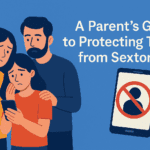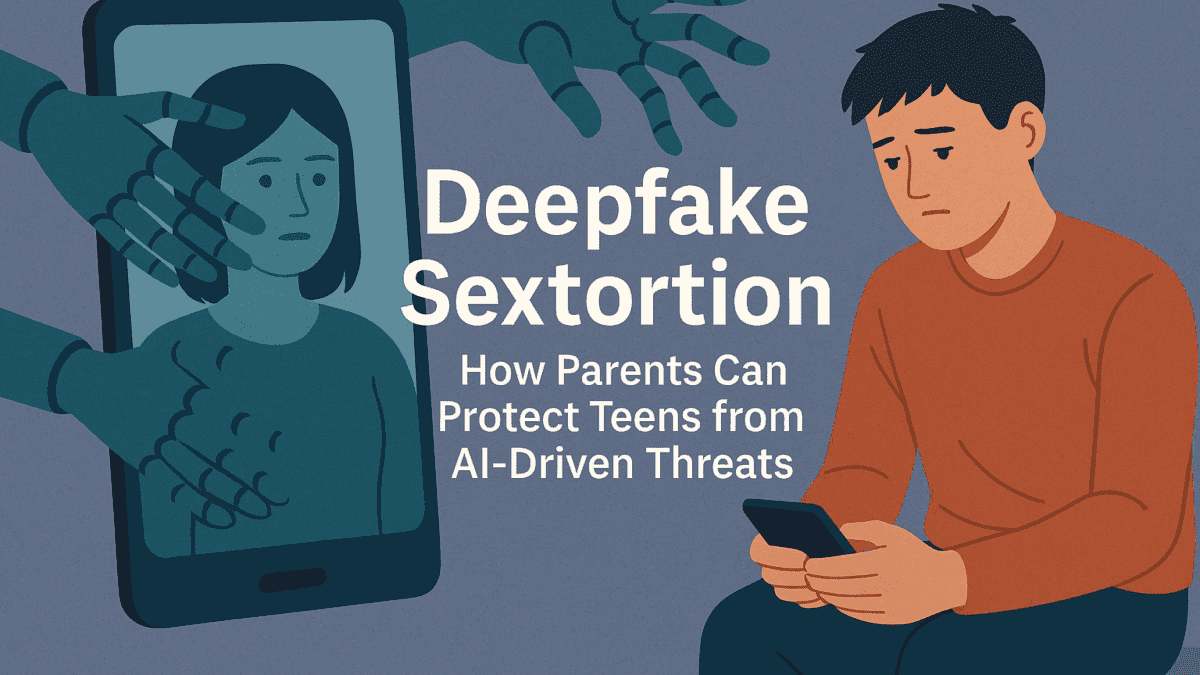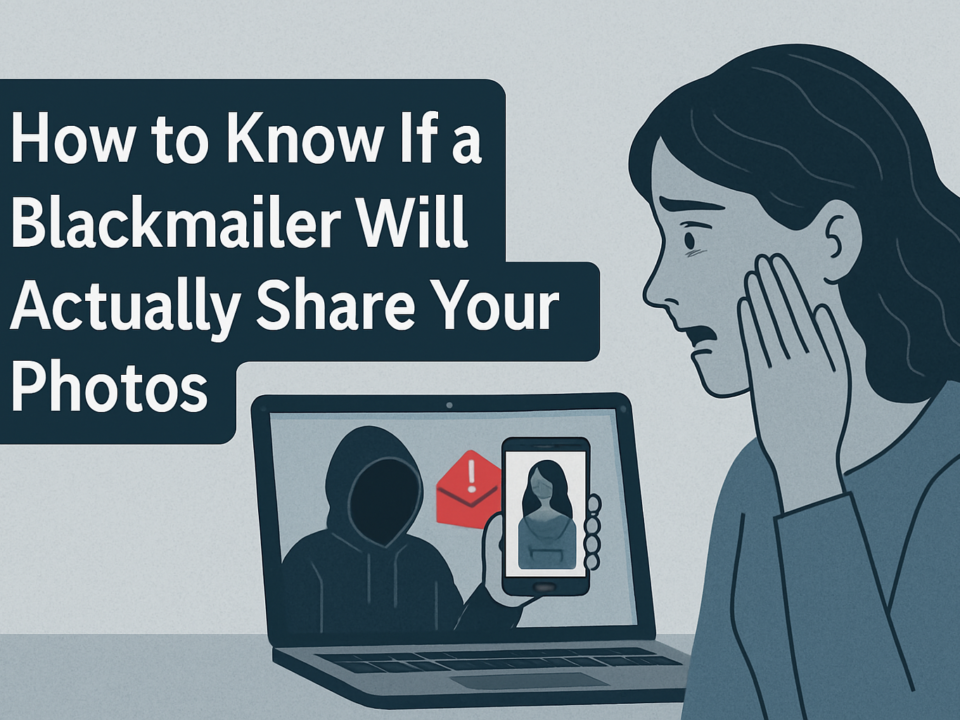
A Parent’s Guide to Protecting Teens from Sextortion
June 18, 2025
How to Emotionally Recover After Blackmail
June 19, 2025A New Threat Has Entered the Chat
You’ve probably heard about sextortion — where someone threatens to leak private photos unless a victim sends more or pays up. But there’s a darker, fast-growing twist:
Deepfake sextortion.
It doesn’t require your child to send anything at all. Instead, AI tools are used to create fake explicit photos or videos using real social media images — and then those are used for blackmail.
The victim never sent a thing. But the damage can still be devastating.
As a parent, this feels like science fiction. But it’s not. It’s happening right now — and teens are prime targets. This guide will help you understand what’s going on, how to talk to your teen about it, and what to do if it ever happens to your family.
What Is Deepfake Sextortion?
Deepfake sextortion is when someone uses artificial intelligence to create fake explicit images or videos of someone — often a teen — and then uses those fakes to threaten, shame, or demand money.
It usually looks like this:
A blackmailer finds public photos from Instagram, Snapchat, or TikTok
AI software turns those into fake nude images or videos
The blackmailer then says: “I made this — now do what I say, or I’ll send it to your family.”
Even if it’s completely fake, the fear feels 100% real.
Why Teens Are Most at Risk
Teens are constantly online, often unaware of how easily their images can be downloaded, duplicated, or misused. A simple selfie or a public video can be turned into something deeply violating with just a few clicks.
What makes deepfake sextortion especially cruel:
Victims feel like there’s no way to prove it’s fake
Blackmailers act quickly and aggressively
Teens may panic and comply — or withdraw completely out of fear
That’s why parental awareness is the first line of defense.
How to Talk to Your Teen About Deepfakes
This conversation may feel uncomfortable — but it’s essential. You don’t need to be a tech expert. You just need to open the door.
Start with:
“Have you heard about deepfakes? There are people using AI to fake pictures and then blackmail others — and it’s targeting teens.”
Then:
Explain how it works (manipulating public photos)
Make it clear it’s not their fault if it happens
Reinforce that they can come to you without judgment
The goal is to build trust, not fear.
Signs Your Teen May Be a Victim
Be on the lookout for:
Sudden fear or anxiety around their phone or social media
Deleting social accounts without explanation
Withdrawing from family or friends
Unexplained emotional outbursts or silence
Ask gently if someone is threatening them. Let them know you’re on their side — no matter what.
What to Do If It Happens
If your teen receives a threat involving a deepfake image:
Do not panic. Stay calm — they’re looking to you for reassurance.
Save everything. Take screenshots of messages, usernames, and images (even if fake).
Block and report. Block the user and report them to the platform immediately.
Do not pay or engage. Responding only encourages more threats.
Get expert help. Contact digital security services like Blackmail Shield to help trace, remove, and shut down the blackmailer.
For legal reporting options, refer to our guide on how to report sextortion to the police.
Tools and Resources for Prevention
While no tool is perfect, these steps can help:
Make accounts private. Encourage your teen to review their privacy settings on every app.
Reverse search images. Tools like Google Reverse Image can help check if a photo is being used elsewhere.
Install monitoring software. Tools like Bark or Qustodio help flag suspicious messages.
Use AI image detection tools. New platforms are emerging to identify whether content has been AI-generated.
But no tool replaces trust. The best filter is an open line of communication.
What the Law Says About Deepfakes and Sextortion
Laws are still catching up with technology, but progress is being made:
United States: New bills like the DEEPFAKES Accountability Act are being introduced. Some states treat deepfake sextortion as sexual exploitation.
European Union: Under the GDPR, unauthorized use of personal data — including manipulated images — is punishable.
United Kingdom: The Online Safety Act includes provisions to criminalize deepfake pornography.
India & Australia: Laws are less specific about AI content, but cybercrime and defamation laws apply.
If you’re unsure what applies in your case, speak to a legal expert or a specialized digital protection service.
Final Thought: You’re Still Their Best Defense
Deepfake sextortion is scary, and it’s evolving fast. But here’s what hasn’t changed:
Your child needs you to believe them, support them, and stand by them — no matter what.
By staying informed, talking openly, and getting help when needed, you can protect your teen from even the most advanced digital threats.
They don’t need you to be perfect. Just present.




